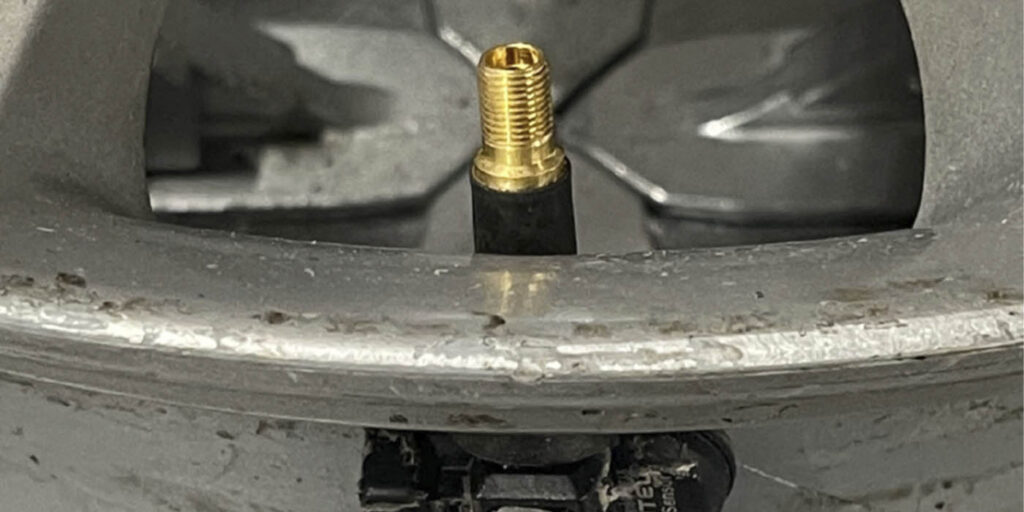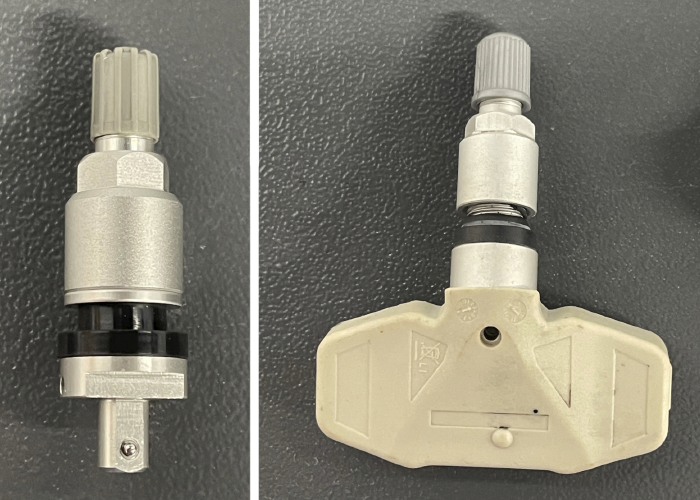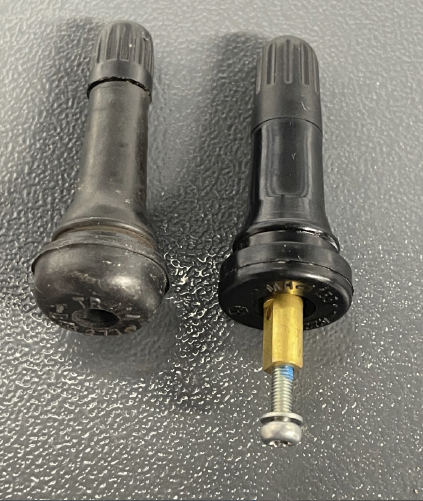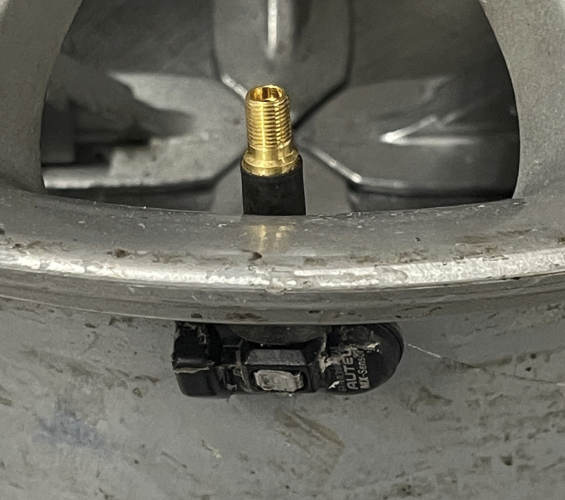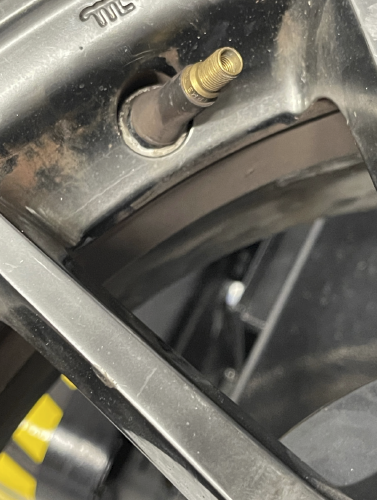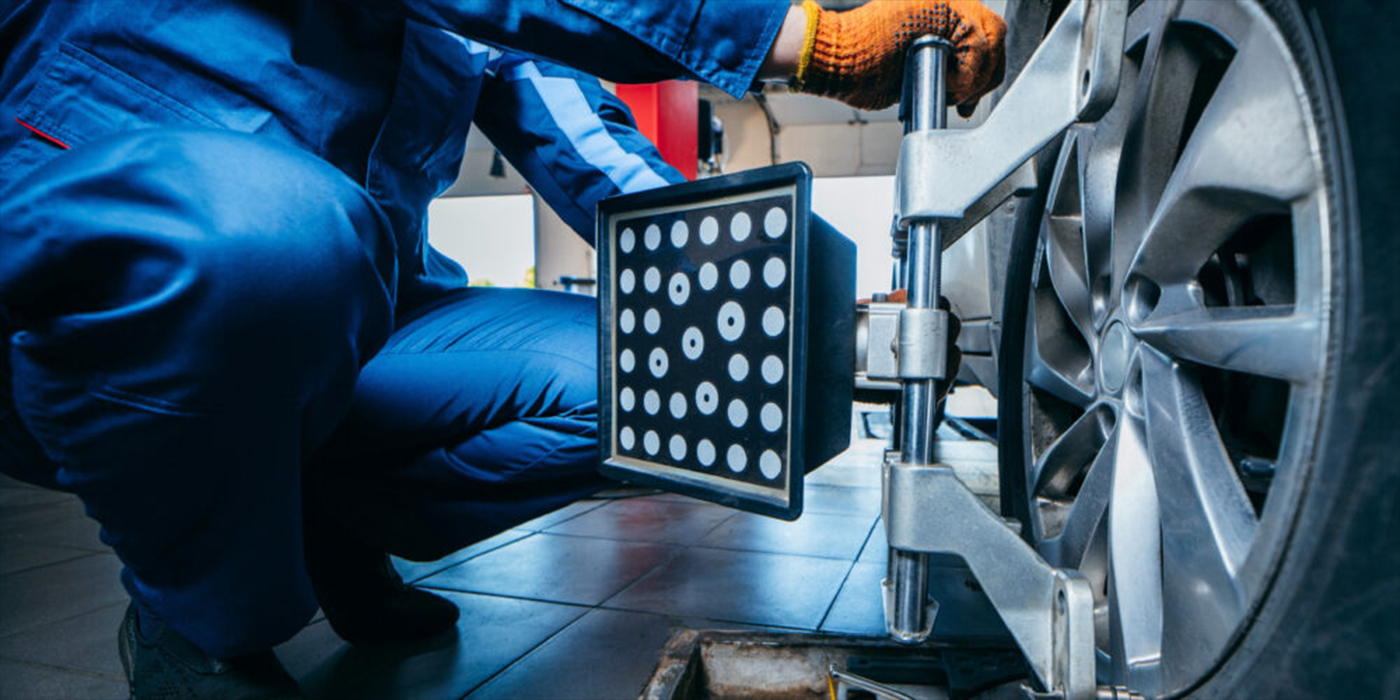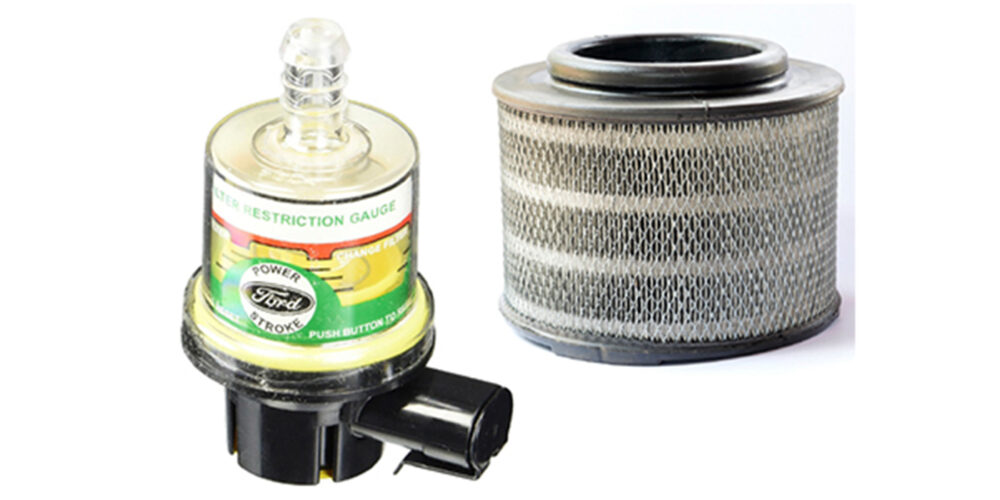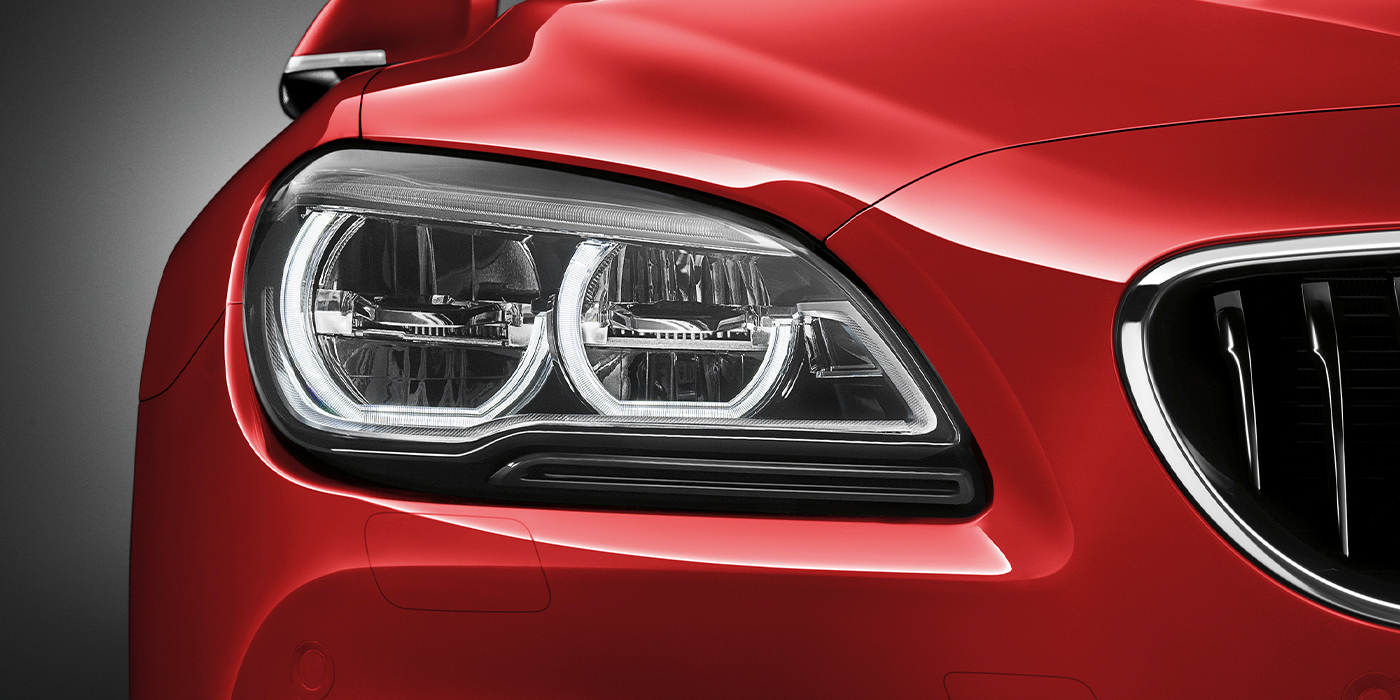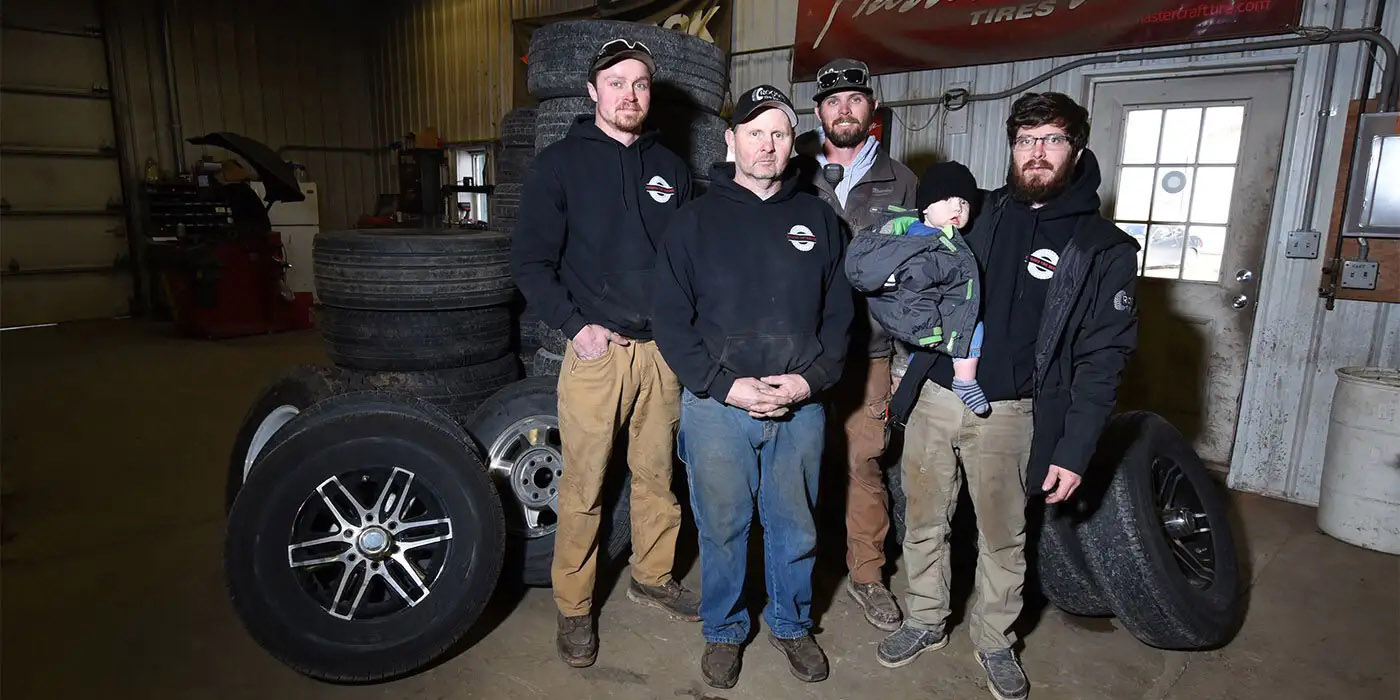Twenty years ago, valve stems were a commodity at most shops. They were purchased in bulk and the only thing that mattered was the length. Today, a valve stem is the attachment point for the TPMS sensor, which has added a lot of complexity.
For 99% of wheel and tire assemblies, the TPMS sensor is either a clamp-on metal valve or a snap-in rubber stem.
CLAMP-ON STEMS
Anytime a clamp-on TPMS sensor is reused or replaced on a wheel, it is necessary to install new seals and valve stem nuts to ensure proper sealing around the sensor valve stem. Remnants of the old seal can cause a slow leak. Do not lubricate or use a sealant in this area. This can change the torque values and cause you to snap the stem.
When inserting the sensor through the wheel, keep pressure against the rear of the metal valve stem. The potted side of the sensor is to be positioned toward the wheel. Mounting the sensor upside-down can cause relearn and transmission problems.
Grommets conform to the mating surface of the wheel. The instant the nut is torqued, the seal/grommet starts to take on the shape of the surfaces it is sealing against. This memory cannot be erased. If the seal is reused, it could cause a slow leak.
Never reuse these nuts. They are made of a softer metal than the stem and can be damaged or develop hairline cracks if over-tightened. The material of choice is typically aluminum. The new nut may have coatings on the threads that prevent corrosion and leaks.
The typical torque values for the base nuts on a TPMS valve stem range from as low as 35 in.-lbs. of torque to as much as 80 in.-lbs. of torque. That’s quite a range. Don’t guess on the torque for the nut – look up the torque specifications for the vehicle you are servicing to make sure you use the correct figures. Some TPMS service kits include the torque spec in the package. Leaks cannot be eliminated by additionally tightening the nut. Sealing grommets are engineered to work at a specific torque.
SNAP-IN SENSORS
Snap-in sensors can look like regular rubber valve stems. The difference is that the molded rubber on the snap-in valve stem does not reach the threads and there is a tapered shoulder. These valves have a longer cap than a non-TPMS valve stem.
Behind the stem is a mounting point for a self-tapping screw that holds the sensor to the stem. There are two installation methods depending on the type of snap-in valve stem you are installing.
The first method involves installing the valve stem in the rim and then attaching the sensor. The second method is to attach the sensor to the valve stem and then insert it into the wheel. Why? On some stems, the sensor could come in contact with the wheel as the stem is pulled with the sensor attached.
When attaching a new valve to the sensor body, always use a preset torque screwdriver with the correct Torx head or hex nut. Most tool suppliers package two preset torque drivers in a set. The torque settings may differ by manufacturer. The screw is self-tapping and can be used only once. The same applies to the stem.
When tightening the screw, be mindful of stress on the sensor and the alignment of the sensor. Start the screw for the first couple of threads and make sure the sensor and stem are aligned. When performing the final tightening sequence, stop when the tool clicks, which indicates that the proper torque has been reached.
Before installing the valve stem, it is acceptable to lubricate the seating surfaces with an approved tire lubricant. Do not use chassis grease or a grease with petroleum distillates. These types of lubricants can degrade the stem’s rubber over time.
Custom Wheels
Most valve stem holes come in a few sizes, with the most common being 0.453 inches, and 0.625 inches for snap-in stems. With TPMS valve stems, the size of the hole can be larger for some snap-in and clamp-on holes, but the real problem can be the anatomy of some custom wheels. The valve stem areas may not have the correct size and shape, affecting how a TPMS valve stem seals. Also, some custom rims can have drop centers, barrels and flanges that don’t match up with the original rim or TPMS sensor. But, there are some options to address this issue.
It is difficult to predict the future of the valve stem. Most OEM wheels have made the switch to snap-in stems on most large-volume platforms. But, some high-performance applications use clamp-on valve stems.
Some are predicting that the TPMS sensor will immigrate to the casing of the tire where information like wear and temperature can be obtained. But, chances are they will have a valve stem.

